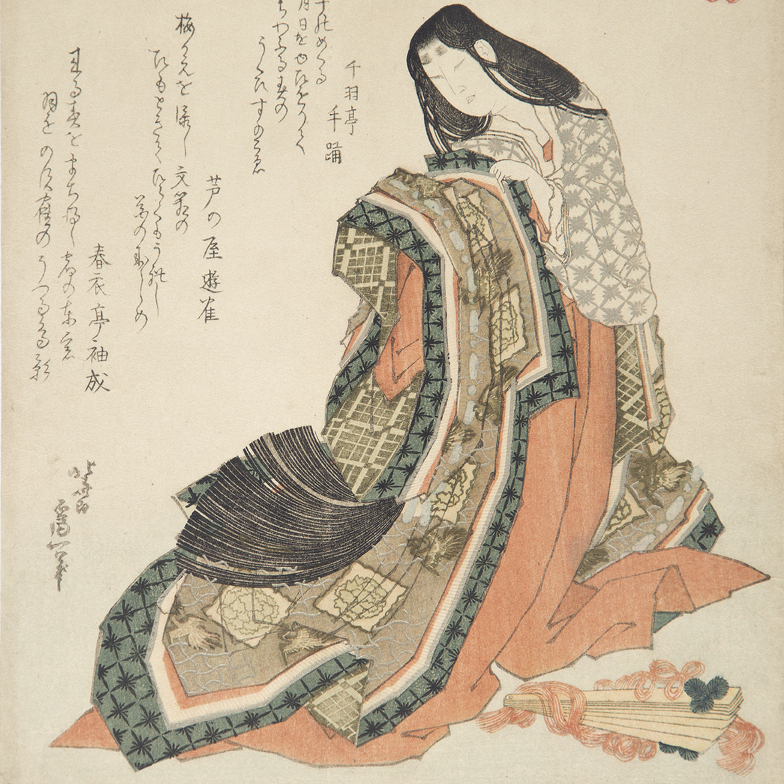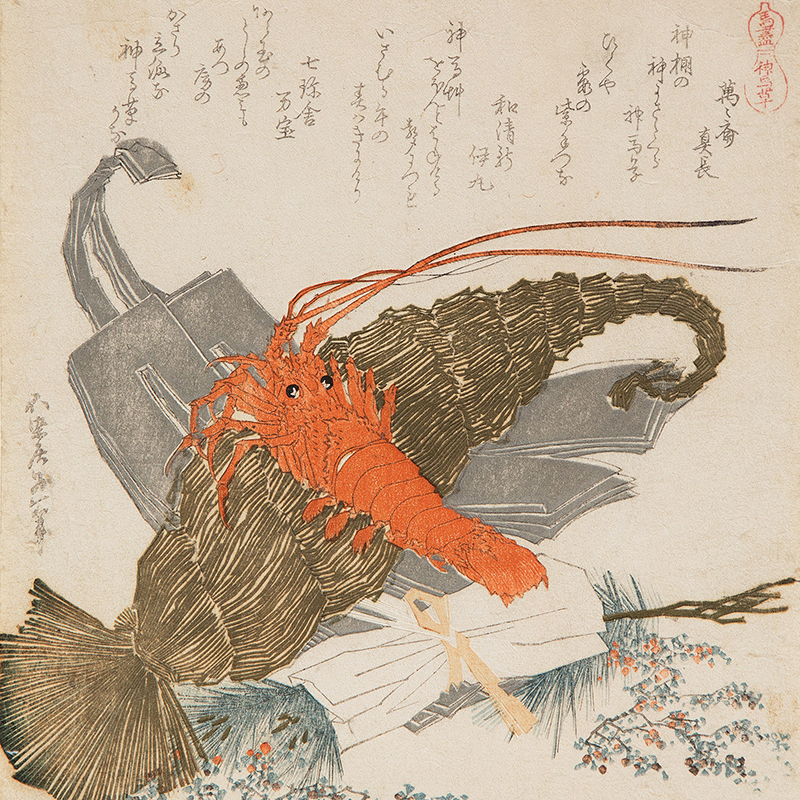Katsushika Hokusai
1760 - 1849
1822
Shikishiban surimono, mm 209 x 185
Signed: Fusenkyo Iitsu hitsu
Series: The Horse Series, 1822 - Umazukushi
This set was commissioned by the club of poets Yomogawa for the year of the Horse 1822.
Very good impression with karazuri, metallic printing and burnished black; very good colour, the poem on the left partly rubbed, otherwise in very good condition.
The surimono depicts a pair of dried seahorses on an unfolded sheet of paper, next to it two preserved beetles in a small lacquer box. The beetles and the dried seahorses connote sexuality and childbirth. The beetles were believed to be an aphrodisiac, the seahorses cured impotency and were used as an amulet during childbirth.
The print bears two poems:
The beetles glitter and raise their feelers - Spring has
come - and the seahorses prance like the first
flowers on the waves - Tsuru no Hinako
Pray for love and respect with ritual writings of the
heavenly brush, but for earthly good fortune, rely on
the jewel bug and seahorse - Yomo no Utagaki Magao (1753-1829)
Reference:
Matthi Forrer, Surimono in the Rijksmuseum Amsterdam, Amsterdam 2013, page 138, n. 255.
Information on the master
Katsushika Hokusai, dominated the scene of the art of the Japanese print (Ukiyo-e) in the field of book illustration, drawing and painting. He was born in the Honjo district of Edo. His passion for art began at an early age; he was adopted by an illustrious family of artisans who introduced him to wood engraving. This influenced his career and at the age of 18 he entered at the studio of Katsukawa Shunso (1726-1793), who specialised in prints depicting the popular Kabuki theatre. Under the pseudonym of Shunro, around the 1780s, he got to know artists like Shigemasa (1739-1820) and Kiyonaga (1752-1815) who influenced his drawing of figures. Around 1790 he produced his first important prints which he signed Kako. He also produced fine Surimono. In 1797 he married and took the name Hokusai, becoming one of the foremost illustrators and artists of Japan. Among his most famous work are the ehon, books of images, as the 15 albums of drawings entitled Manga. The most celebrated of his prints series is The thirty-six views of Mount Fuji, early thirties. Amongst his many pupils: Shinsai, Hokuju, Hokuba, Hokkei, Shigenobu.
Other works of the master









